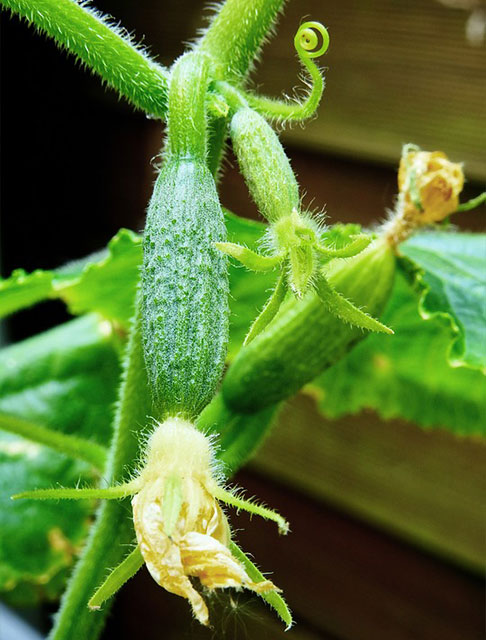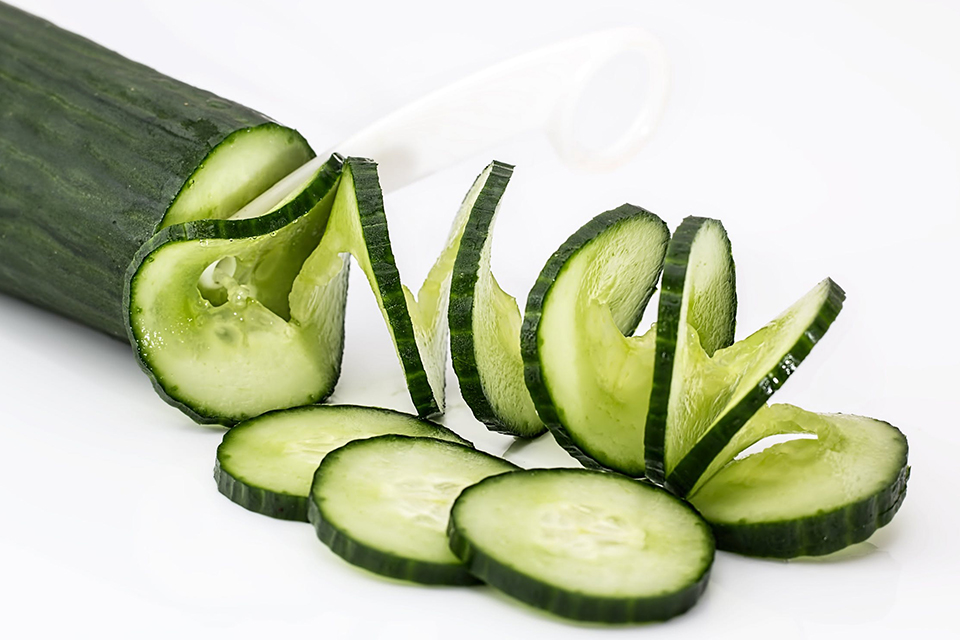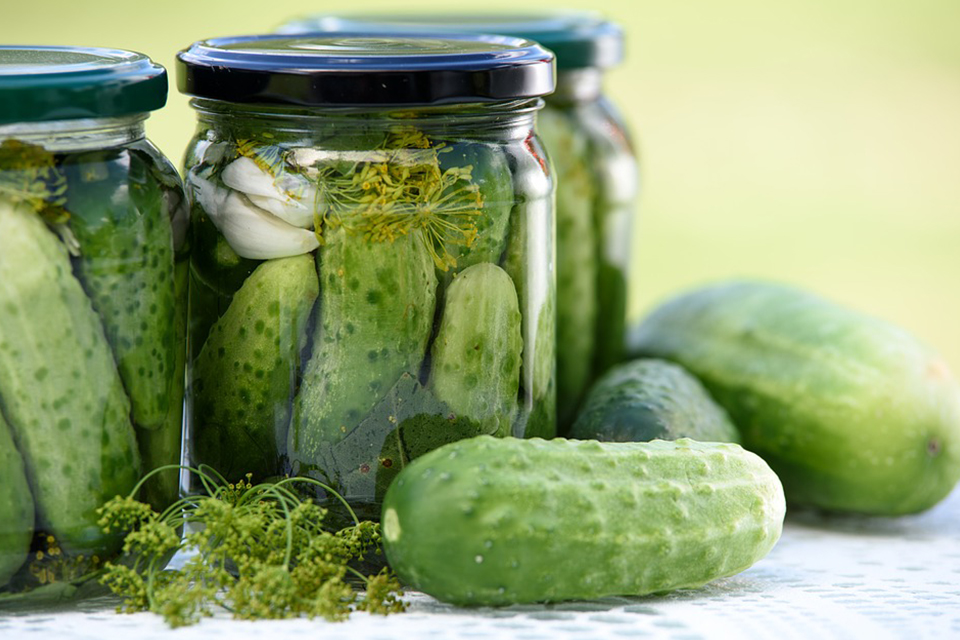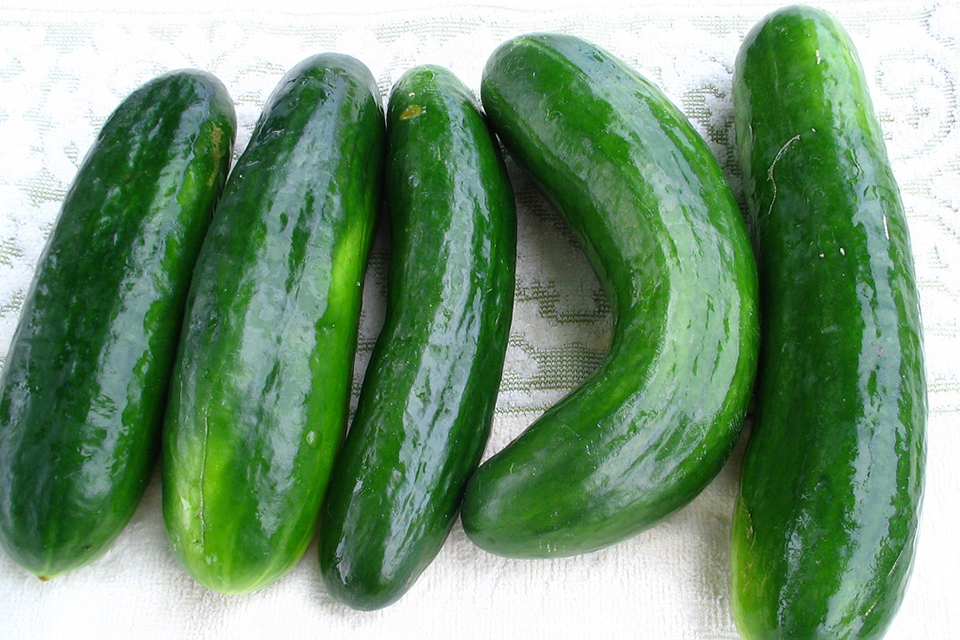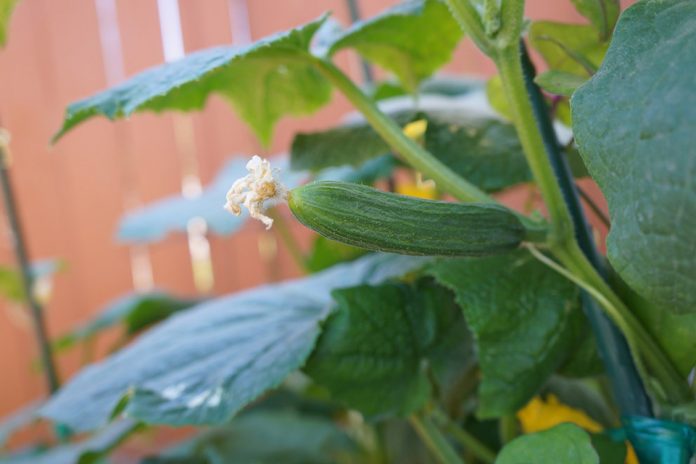
Those new to gardening may be surprised to learn that there are hundreds of different types of cucumbers. As a matter of fact, new varieties of cucumbers are being grown in gardens all of the time. What makes cucumbers so intriguing is the fact that they grow in a number of environments, and they all have their individual tastes and textures.
If you want to expand your garden’s cucumber section, the first step is learning about the different types of cucumbers. Let’s discover the three main varieties of cucumbers and what makes them unique from one another.
Many Types of Cucumbers and Many Great Benefits
First, let’s talk a little about cucumbers in general. Cucumbers have been around since the dawn of time. Before they became popular in salads and party platters, cucumbers were primarily known for their nutritional factors. They reduce the risk of cardiovascular disease, support eye health, and detox the body, among many other benefits.
While most people consider cucumbers to be a vegetable, they are actually a fruit. As members of the plant family Cucurbitaceae, which also includes squashes and melons, cucumbers are nurtured from the ovaries of flowering plants.
Cucumbers are quite fascinating. They are roughly 96 percent water which keeps them generally cool and moist even in warmer environments. Cucumbers are also very low in calories, with one-half cup of sliced cucumbers containing barely eight calories.
There are three primary categories of cucumbers in existence. They include slicing cucumbers, pickling cucumbers, and burpless cucumbers. Within each of these categories are many different types of cucumbers, each with its own individual taste.
Planting Cucumbers
Regardless of which variety you decide to grow, the planting process is about the same for all three. They need soil that drains well and sun exposure. You should not plant them in frost season. You can plant four to five seeds together, one inch into the soil, with the rows about four to five feet apart. All of these types of cucumbers and their seeds are available online or at your local farmer’s market.
Slicing Cucumbers
Of the three major cucumber categories, slicing cucumbers are the most popular. Many of the types of cucumbers we find in our kitchens are of the slicing variety. Slicing cucumbers usually come out to about six to nine inches in length and come with a thicker skin than other types of cucumbers. Slicing cucumbers can take a bit longer to grow than pickling cucumbers, with four to six weeks of growing time.
Sometimes people call them the American slicing cucumber. That is because they grow without spines which makes them more appealing to consumers. Also, the darker and thicker skin makes them easier to transport to grocery stores. These types of cucumbers are common in sandwiches and salads. They are also great for adding a crunch to sushi, and you can use them as a garnish for water and other beverages. The fact that they have a sweeter taste, firm skins, and fewer seeds, also make them a favorite for grocery shoppers.
There are many types of cucumbers in the slicing category. Some of the most popular include the four options below.
Dasher II
One of the most common slicing cucumbers, the Dasher II variety is a darker cucumber with a white-spined interior that is usually ready to eat after 55 days. They are typically 8.5 inches long, and they offer a satisfying crunch.
Spacemaster
Ideal for smaller gardens and hanging baskets, Spacemaster cucumbers are smaller than some of their cousins. The cucumbers grow from short vines with an average size of about seven inches in length. This is another variety that is great in salads.
Ashley
Another type of cucumber that is great for lunch with a crunch, Ashley cucumbers grow well in shade and sun and produce a crisp flavor. Those who live in humid temperatures might decide to grow Ashley cucumbers because they are resistant to downy mildew.
Sweet Success
A little different than the others, Sweet Success cucumbers come out to about 12 to 14 inches long. Benefits of this type of cucumber include being completely seedless, offering no bitterness, and because of their thinner skin, they do not require peeling before eating.
Pickling Cucumbers
The second major category of cucumber is the pickling variety. This label also includes many different types of cucumbers. The most significant difference between these and slicing cucumbers is that pickling cucumbers have drier interior flesh that helps them soak up more of the brine that they are pickled in, hence giving that pickled taste.
Of the three types of cucumbers, the pickling variety is generally shorter, usually coming out at about three to four inches long. They also generally have thinner skin, and they have thin spines. You can enjoy pickling types cucumbers much sooner, with the harvest time being about seven to ten days. Some of these pickled cucumbers offer their unique taste immediately after you pick them. Others can be picked and then put into a brine liquid with your choice of spices to make your own perfect, pickle taste.
As with slicing cucumbers, there is almost an endless variety of types of pickling cucumbers. Here are some of the most popular.
Gherkins
Gherkins are perhaps one of the most well-known types of cucumbers in the pickling arena. Coming in at around one to two inches, these delights are popular in France and America and are often accompany sandwiches or other entrees. Also known as cornichons, these pickled cucumbers are grown then pickled in jars until they reach their desired taste.
Regal
The more traditional pickled cucumber, the Regal variety grows like a slicing cucumber, then they convert it to a pickle through the brining process. Due to its length, they are great for eating as a whole pickle, as chips, or cut into spears.
Calypso
A tasty, high-yielding cucumber, the Calypso variety is a firm, one-inch thick style that is great for pickling. They grow up to seven inches long and are also great as pickle spears. They are a bulkier cucumber with dark green skin and a minimal spine.
National Pickling
Great for dill pickles, the National Pickling variety offers a crisp, six-inch, tender-skinned cucumber. It has a thin and tender skin which allows it to soak in spices very easily which creates the potential for having explosive flavors.
Burpless Cucumbers
As far as the different types of cucumbers go, the burpless variety is in a family all its own. Burpless cucumbers are sweeter and have thinner skin than their cucumber cousins. Some people have reservations with the gassiness that can occur when eating the other types of cucumbers. Burpless cucumbers remedy that issue.
These cucumbers usually grow to about two feet in length, they are generally seedless, and they have delicate skin. These are the cucumbers that you find in the store wrapped individually in plastic. They market them as seedless because the seeds cause the gas that some customers want to avoid.
Burpless cucumbers are common in American and Asian cuisine. They contain very little sodium and no cucurbitacin, which creates the “bitterness” and burping effects often found in the other types of cucumbers. The great thing about burpless cucumbers is that they span the globe with many countries having their own variety of this modified cucumber. Here are a few that you can find at the farmer’s market.
Green Burpless
Promising the qualities that result in a cucumber less capable of causing burps, the Green Burpless variety is a straight cucumber that comes out to around eight inches in length. It has a pleasant taste and deep green color, adding extra depth to salads and sandwiches.
Japanese cucumbers
Long, slender, and coming out to about 18-inches long and an inch or so in diameter, the Japanese variety is one of the most popular types of cucumbers in the burpless family. True to the burpless rules, they have a thin skin, and though delicate, they offer a mild yet crisp taste. Japanese cucumbers are best grown on a trellis system so that the vines can spread laterally over the soil.
Sweet Slice
Sweet Slice cucumbers grow without any trace of bitterness, making them the ultimate burpless cucumber. This cucumber is slim and about a foot in length. Most people eat them without removing the skin. The crisp, tender, white flesh creates an extra-sweet taste, making them great with gourmet meals. Sweet slice cucumbers are also most productive when grown on a trellis system.
A Cucumber for Every Palette
The vast amount of different types of cucumbers make them a must-have in any garden. Such a variety allows you to grow the cucumber literally made for your particular taste buds. Try growing several varieties and find which one suits you best. While all of the cucumber varieties mentioned above are truly delicious and a treat to grow, feel free to do your own research. That is the best way to find out which of the many hundreds of types of cucumbers will make the perfect touch to your garden.

